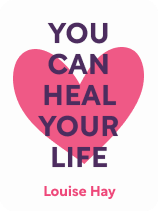

This article is an excerpt from the Shortform book guide to "You Can Heal Your Life" by Louise Hay. Shortform has the world's best summaries and analyses of books you should be reading.
Like this article? Sign up for a free trial here.
How can practicing affirmations help you effect positive changes in your life? What are the best affirmations for change?
Affirmations are one of the most effective tools for creating positive changes in your life and becoming the person you want to be. Repeating affirmations for change can help you can make a tremendous difference in your life by reinforcing more positive and effective ways of thinking.
Here’s how to use affirmations to change your life for the better.
Begin With a Willingness to Change
When it comes to the process of using affirmations for change, the first step is being willing to change. Because your negative beliefs create a subconscious need to engage in certain negative behaviors and habits, you have to be willing to let go of that need in order to heal.
For example, if you think that you’re odd and unlikeable, you may become dependent on binging TV shows to drown out the pain of your loneliness. To heal, Hay says that you must tell yourself that you’re willing to release the need for your bad habit or behavior—in this case, the need for TV binges. You must tell yourself that your thoughts created the problem and that you’re willing to give it up. For example, you could affirm to yourself, “I release the need for TV binges. My thoughts of unworthiness created this need to immerse myself in a fantasy world, and I am willing to give it up.”
(Shortform note: Depending on how you approach it, acknowledging how your thoughts created the problem can decrease or increase feelings of shame, which leads to fear, blame, and disconnection. We can infer that Hay would want us to decrease this negative feeling through our affirmations, so it might be helpful to mentally acknowledge the purpose the behavior served and then declare it no longer needed. For example, in this case, the affirmation might become: “I release the need for TV binges. I used to feel unworthy, and immersing myself in a fantasy world gave me temporary relief. But I am willing to give it up in exchange for long-lasting happiness.”)
Once you’ve affirmed your willingness to change, you can take the next step: turning your desired changes into affirmations. For example, you could say to yourself, “I love and accept myself, and I am worthy of love,” or “I have a healthy relationship with streaming shows.” Note that these affirmations are stated in the present tense—Hay says that this is crucial. It tells your subconscious mind that, for example, you love yourself now, rather than telling it that you will love yourself at some point in the future. In this way, you can avoid putting off solving your problems.
Use Affirmations Consistently and Holistically
According to Louise Hay, positive affirmations can solve your problems and change your life. However, she does issue a few caveats when it comes to relying on them. First, she says that if you want to heal yourself, you have to practice every day: If you’ve been relying on negative thinking your whole life, it’s not something you can change overnight. (Shortform note: How often is often enough? Some say to begin with repeating your affirmation ten times when you wake up and ten times when you go to bed, and build from there.)
Second, Hay cautions that she doesn’t have all the answers and that different healing techniques work for different people. She advocates a holistic approach to healing that addresses the body, the mind, and the spirit, and includes practices like eating healthy foods and meditating. (Shortform note: The mind-body-spirit connection is a tenet of many ancient and indigenous belief systems, particularly as it relates to healing.)

———End of Preview———
Like what you just read? Read the rest of the world's best book summary and analysis of Louise Hay's "You Can Heal Your Life" at Shortform.
Here's what you'll find in our full You Can Heal Your Life summary:
- The causes and effects of negative beliefs
- How to transform your negative thoughts into positive ones
- How to solve your problems with relationships, money, work, and even illness






